Those familiar with my work know I have a Sagittarian tendency to put information into charts so that I can see everything at once. I’ve been delving into Taro As Colour lately and couldn’t help myself. I thought I’d share what I’ve learned with those interested in this fascinating tarot deck. The charts used in this article can be downloaded at the end. My apologies for the lengthy newsletter but some things take time to explain.
I first learned about Ithell Colquhoun from a short documentary by Fulgur Press. At the time my studies were focused on researching the Golden Dawn system of color scales for The Great Work Book so I was thrilled to learn about Colquhoun's art and her creation of a color-only tarot deck using the same system. I purchased Taro As Colour from Fulgur Press who recently produced the deck from the original enamel paintings exhibited in 1977.
When using these cards in social media posts I tend to receive responses regarding how one might read tarot cards that have no archetypal imagery to rely on. After spending a lot of time with the Taro As Colour deck and its companion book1, I believe there are a few different ways you can approach using this deck.
Reading Intuitively
One approach would be to read the cards intuitively. For those sensitive to color, it is plausible that one could use their intuition and prior knowledge of tarot to form a relationship with each card and, in turn, the energy housed within. However, limiting oneself to a strictly intuitive relationship with Taro As Colour would mean missing out on all that this deck was intended for.
Tarot Meditation Aid
It is taught in the Golden Dawn system that colors are vibrations that, when utilized in meditation or ceremony, make a connection with certain energies. This seems to have been Colquhoun’s main focus in the creation of Taro As Colour. There are many interesting ways to use this to your advantage, even while studying other decks. Because no matter the deck the energies and ideas represented are the same for each card.
For example, while studying any card from a traditional deck, it could be beneficial to have Taro As Color alongside to meditate on without the archetypes of the conscious mind obstructing the subconscious. Meditate with a card from Taro As Color for a direct connection to the subconscious while studying the archetypal images of the same card from your chosen deck for the intellectual, conscious connection.
The Map & Code
The cards of Taro As Colour are far more than abstract paintings inspired by energies. This is a deck of elemental alchemy; a map of nature's energies, carefully crafted by Colquhoun, using the Tree Of Life as a template and the Golden Dawn Color Scales as code.
A broader approach to using this deck would be to study the map and learn the code. To grasp the full scope of the 78 cards of Taro As Colour one must have some previous knowledge of the structure of the Qabalah and traditional tarot decks as well. You don’t have to be an expert in either of these, but a basic understanding of Qabalistic terminology and its numbering system is needed.
The Progression
Colquhoun felt the division of tarot decks into Major, Minor Arcana and Court Cards seemed disconnected. Although Taro As Colour is a traditional 78-card deck that contains these same divisions, the progression has been restructured by element. In addition to re-ordering the deck, the traditional occult titles are printed on the cards and act as pointers on the map.
Colquhoun's method of progression through the cards begins with the four elements. The deck is separated by element/color into four stacks in this order; air/yellow, water/blue, fire/red, and earth/indigo.
Beginning with the Ace of an element, proceed to its elemental Trump; The Fool/air, The Hanged Man/water, Judgment/Fire, and The World/earth.
The Court Cards come next, each followed by the Minor Arcana that share the same Pillar on the Tree of Life.
Finally, the remaining Major Arcana are added according to their occult title and elemental affinities; The Children/air, The Daughters/water, The Lords/fire, and The Magi/earth.
This progression repeats for all four elements and looks something like this…
Grouping
So let’s take a closer look at how this progression works. First, it’s important to understand Colquhoun’s groupings. The chart below shows the grouping and progression for each element. As you can see, multiple patterns begin to emerge. Not only do we see patterns in the colors but in the numbers as well. This repetition was intentional on Colquhoun’s part and meant as an aid for memorization.
Color Patterns
Although this looks complicated at first, only four color sequences are used.
The Suit (•) - The suit color of an element is repeated throughout each card in its group except for the elemental affinities.
The Trumps (••••) - All Trump cards, both elemental and affinities, use their traditional Golden Dawn colors in the Four Worlds.
The Court Cards (•••••) - The colors of Elemental Trumps are repeated in each of the Court Cards with the addition of a Court’s element color; Prince/yellow, Queen/blue, King/red, Princess/indigo.
The Minor Arcana (•••) - These use only three colors; the suit element, the Court Card element, and the Qabalistic position in Atziluth.
Additionally, the four Court Cards native to their elemental suit are marked in the center with a dotted circle; Prince of Swords/air of air, Queen of Cups/water of water, King of Wands/fire of fire, and Princess of Disks/earth of earth.

Number Patterns
The Elemental Groupings and Progression Chart above shows number sequences repeated after each Court Card. These numbers relate to the Sephiroth on the Tree of Life. The chart below shows a reorganization of the Minor Arcana by their numbers. Further color patterns emerge from this view.
The placement of the Court Cards on the Tree of Life is key to understanding Colquhoun’s progression of the Minor Arcana. Each court card “captures” the Minor Arcana cards on the pillar beneath it.
Kings include 2, 4, 6
Queens include 3, 5, 8
Princes include 6, 9
Princesses include 10
Viewing the progression this way allows us to see, not only the simplicity of the system but the genius behind it as well.
Trump Card Elemental Affinities
The last section of each element contains the remaining Trump cards. As mentioned previously, their color sequence is synonymous with the Golden Dawn’s color scales and are grouped based on their Golden Dawn occult titles; Children/Air, Daughters/Water, Lords/Fire, and Magi/Earth.
At the time of this writing, I am still searching for an explanation or pattern regarding these groupings. Cards representing a particular element have occult titles that don’t necessarily fall under that same element. Although the pairing of titles with a particular element makes some sense, the reasoning behind pairing a card with a title is not fully apparent. Some of the remaining Trumps fit perfectly into their affinity group, but most seemingly don’t. I’m tempted to use the method of Tetragrammaton to reconcile these groups but haven’t found any information to support that theory. Considering how precise Colquhoun was in her method I believe that as much thought and attention went into this grouping as with the others and an explanation is to be found. Anyone with information or opinions on these elemental affinities is welcome to write or leave a comment.
M 🔮
Colquhoun, Ithell, and Amy Hale. 2018. Taro As Colour. Fulgur Press. https://fulgur.co.uk/





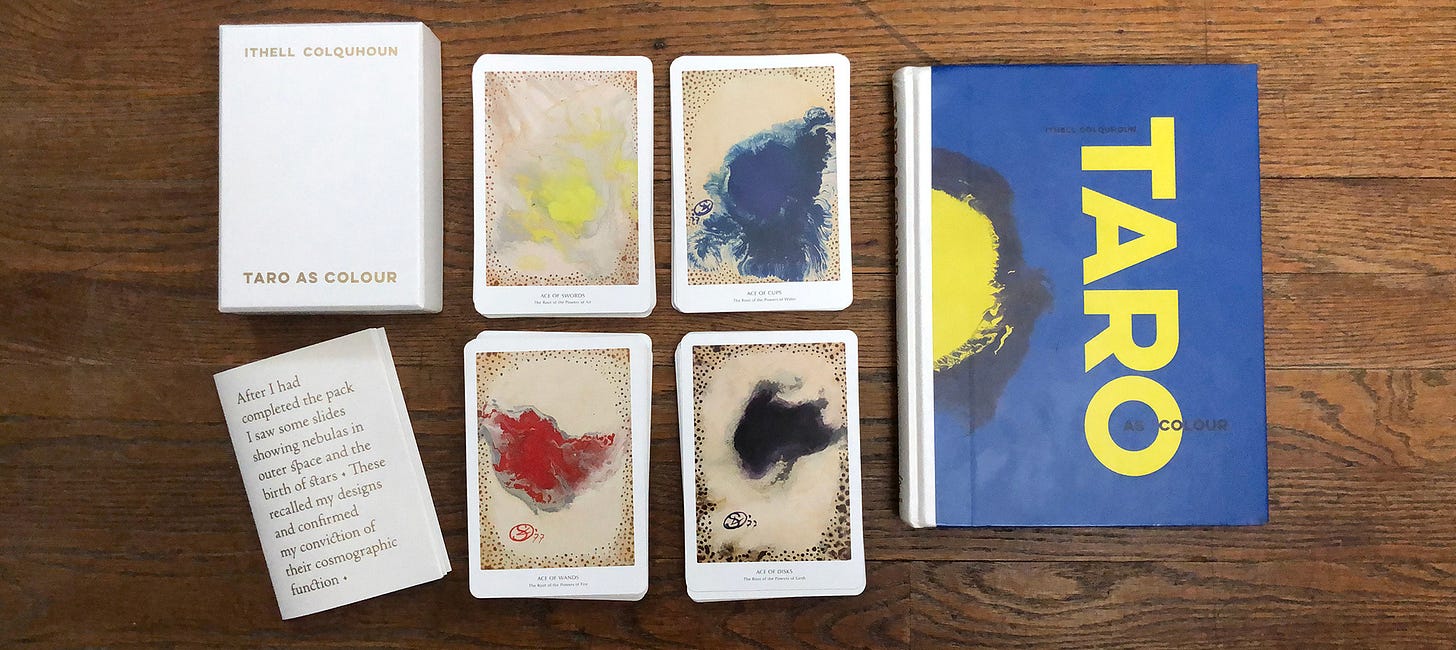
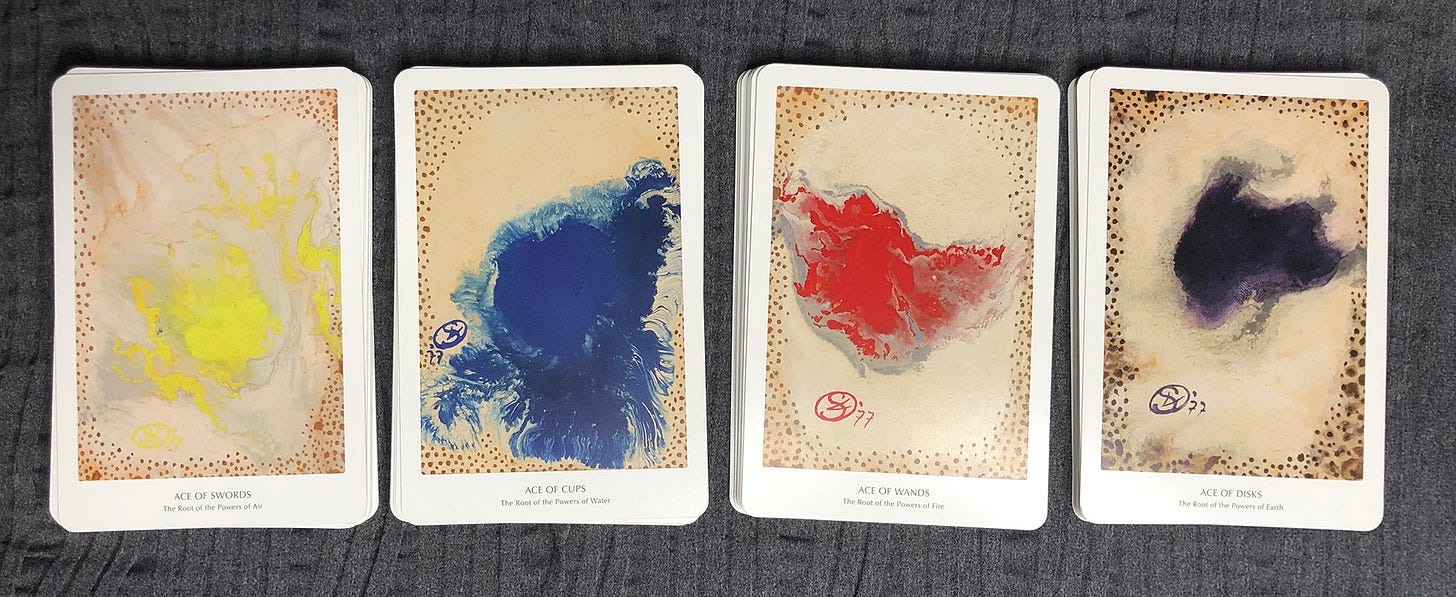

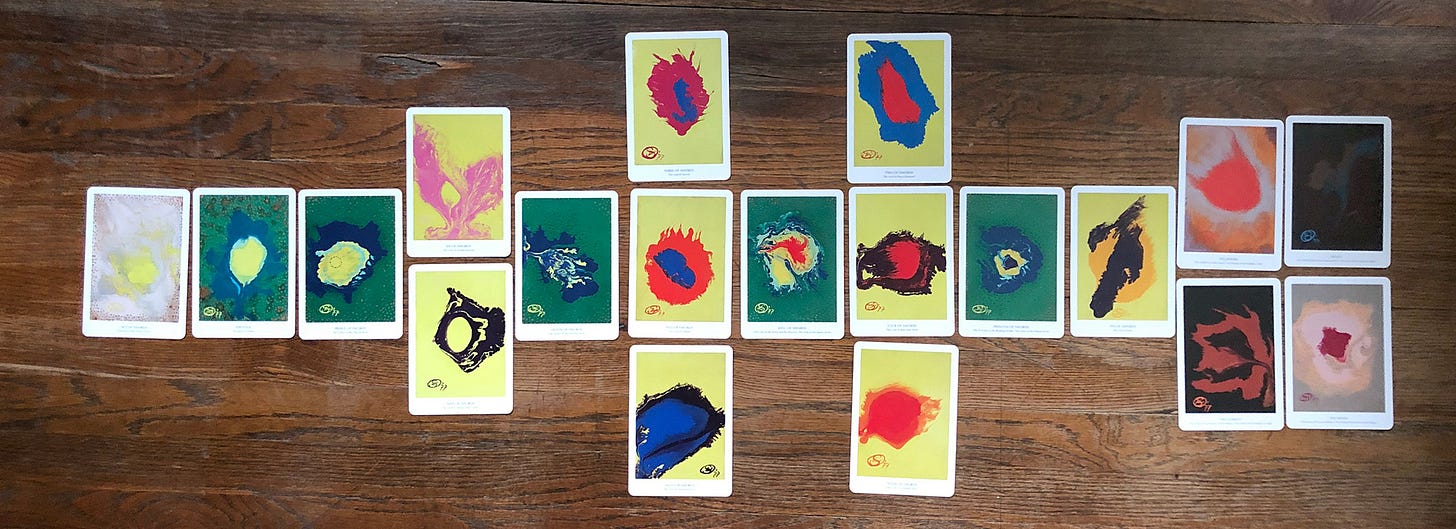
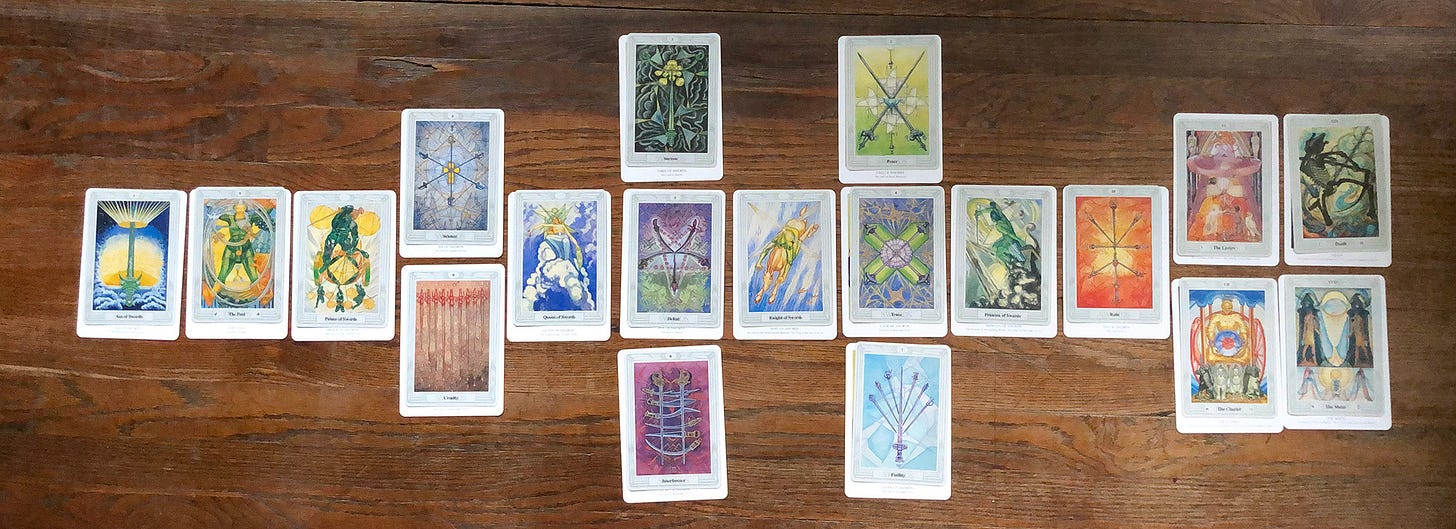
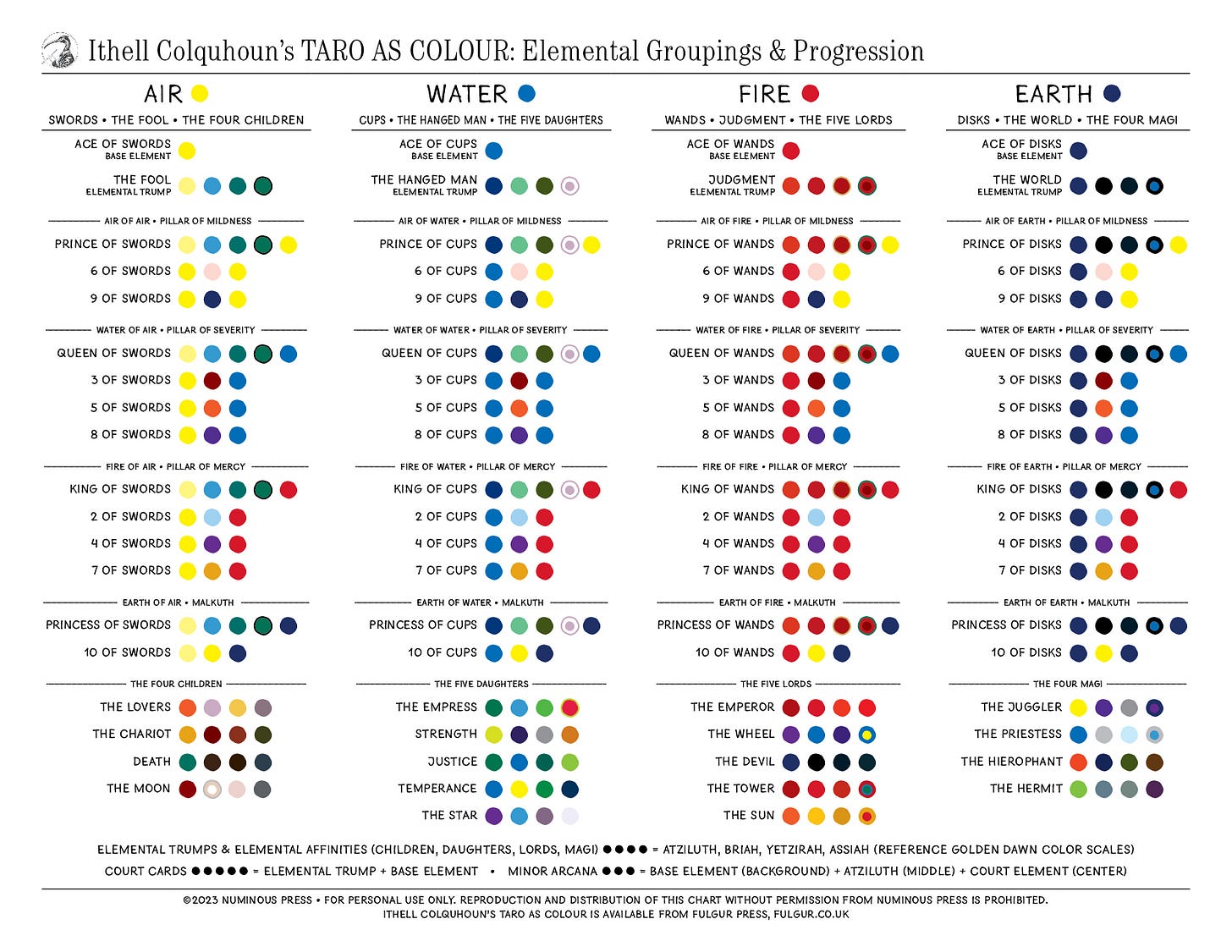
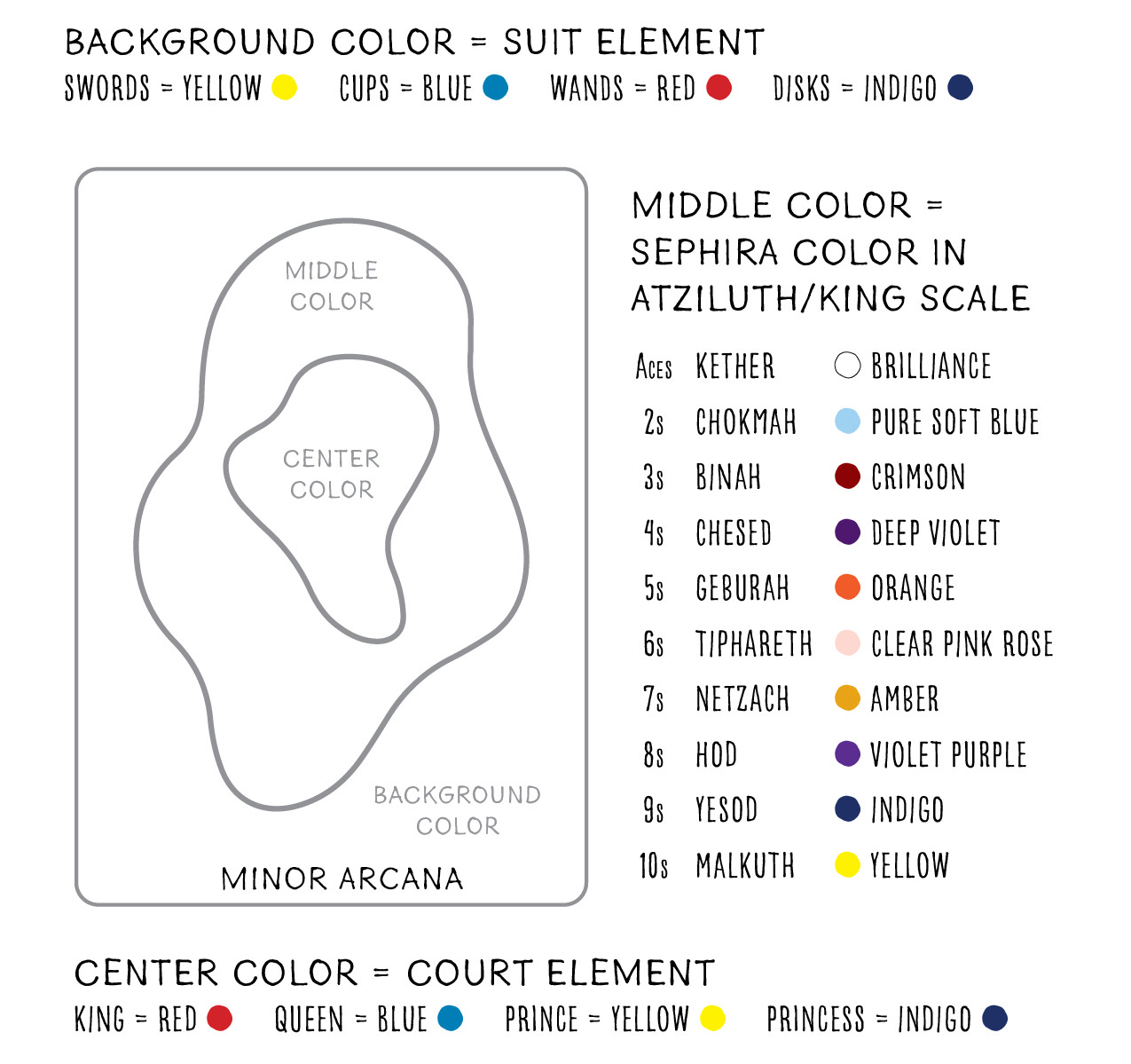
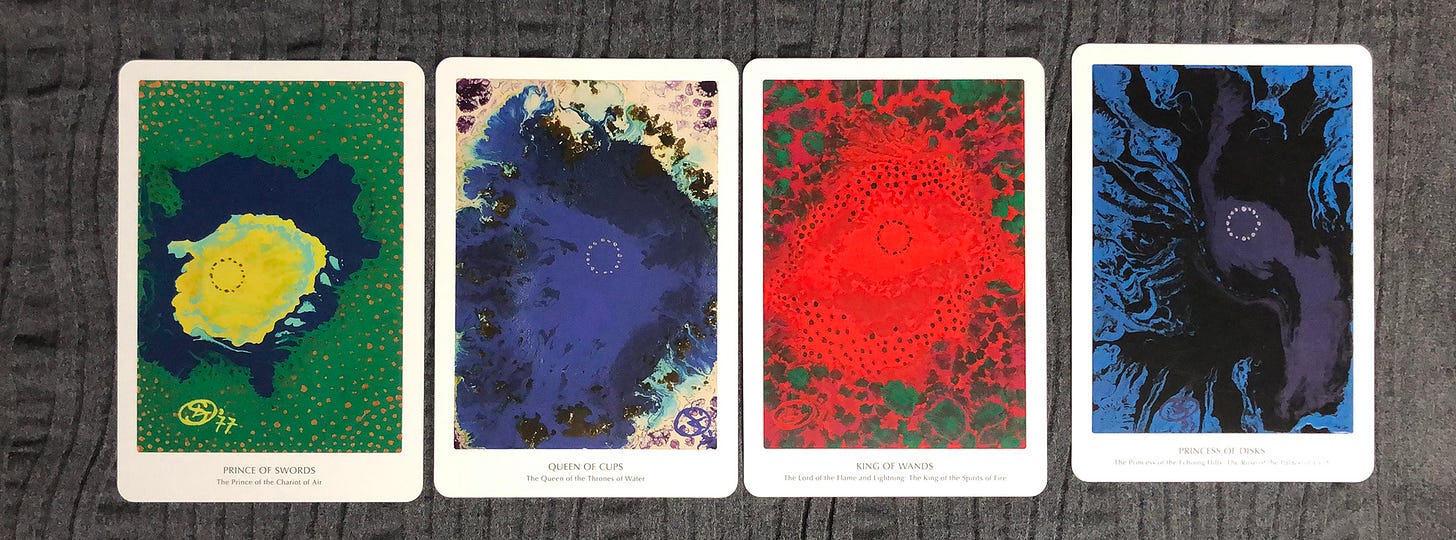
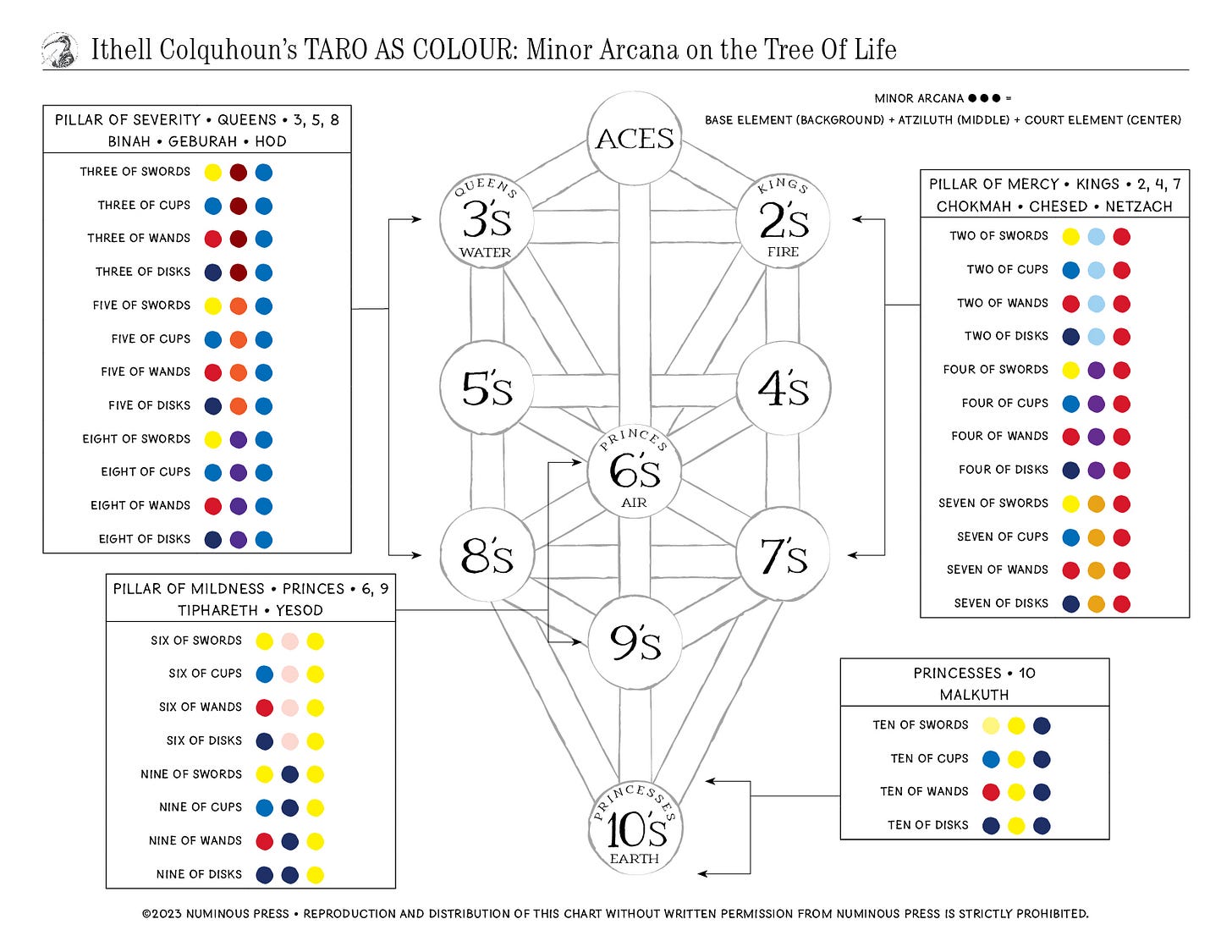
Wow, thank you for writing this. I just learned about Ithel Colquhoun earlier this year and have been eating up anything I can find about her. Taro of Color hits so many notes for me. I am so happy to have found your substack!